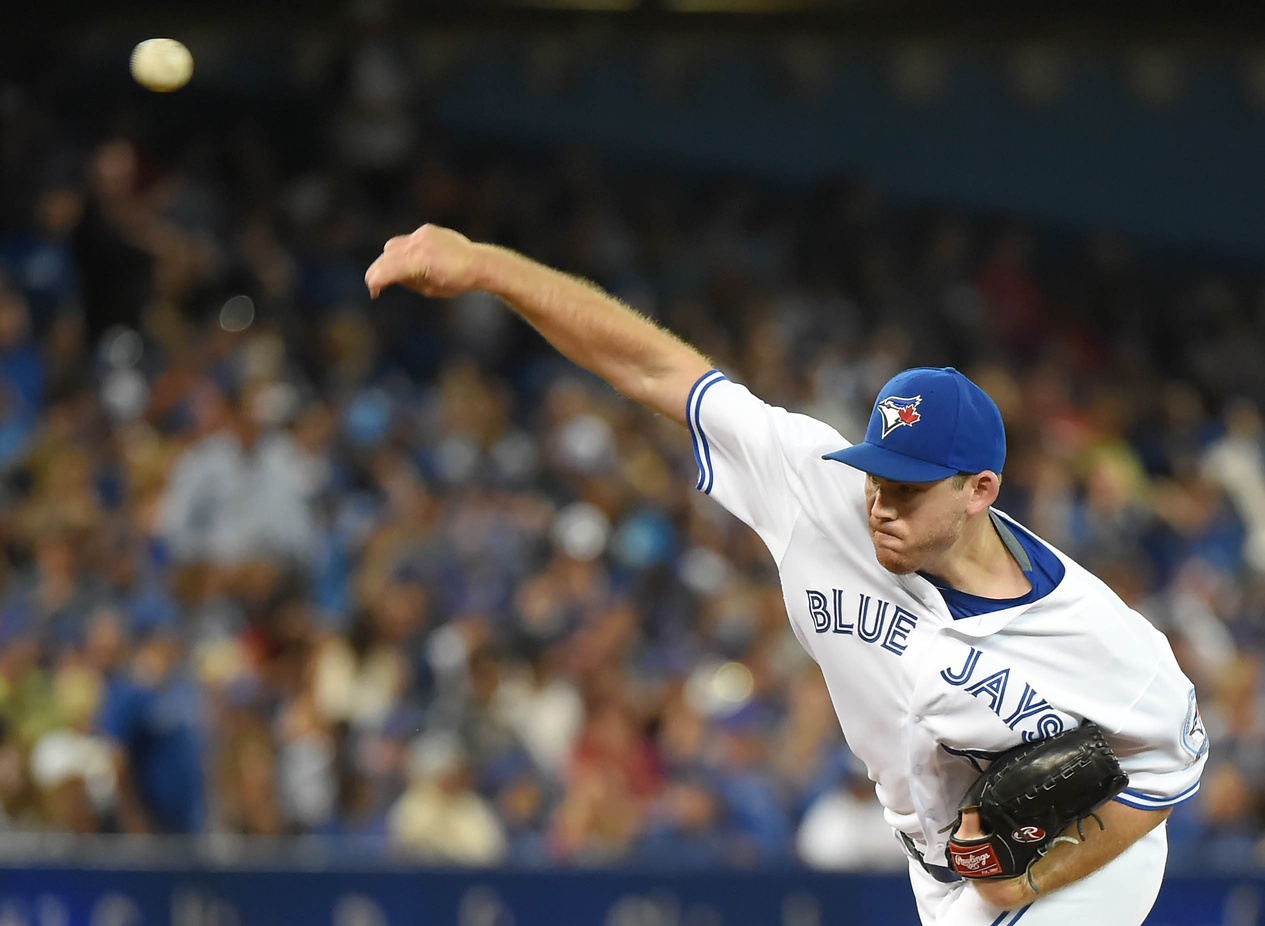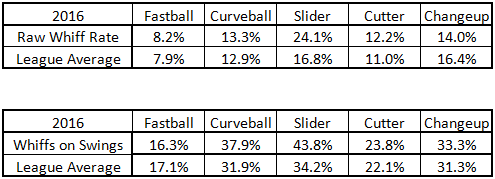Joe Biagini has been nothing short of a revelation this season. He started off as an irreverent Rule 5 pick who didn’t even know the rules about if/how he could stay on the Blue Jays. And even with the Rule 5 designation, he needed injuries to earn a real chance at making the team out of spring. He was such a wild card that even he was surprised that he actually earned a spot. Now he’s carrying a 2.43 ERA across 59 1/3 innings and has become one of the most trusted men in John Gibbons’ bullpen. He won’t get many Rookie of the Year votes, Michael Fullmer seems to have that locked up, but he has clearly made way more impact than anybody could have hoped for from a freshman reliever.
Clearly, Biagini has been very good. What’s interesting though, is how he has gotten here. To Jays fans, he is a reliever. That’s all they’ve seen, and he’s been great there. But should he actually stay there? Probably not.
Because he was in another organization, most people aren’t aware that Joe Biagini was a starter for his entire minor league career. He stuggled at the outset, but finally broke through in 2015 with Double-A Richmond, where he posted a 2.42 ERA with a career best 2.3 BB/9. His strikeouts fell, however, so the Giants left him off their 40-man roster and thus eligible to be selected by the Blue Jays.
The Jays didn’t need a starter with Sanchez, Floyd, Chavez, and Hutchison battling for one rotation spot, so Biagini was never given a chance in that role. But as the season has gone on, we’ve seen more of that version of the tall righty. Most relievers have two, maybe three pitches that they rely on to get outs. At the outset of 2016, this was certainly true for Biagini, as over 95 percent of his offerings were either fastballs or curveballs. With the depth on his breaking ball and the movement on his fastball, this made some sense, and it helped him go through his first month of the season allowing just a solitary earned run across 6 2/3 innings.
As the season has gone along, however, Biagini has continued to add. He started throwing a slider in May and continued to get very good results, once again allowing just a single earned run but across 14 1/3 innings this time. By that point, Biagini had taken over the role of eighth-inning reliever thanks both to his 0.86 ERA and the struggles of Drew Storen and Brett Cecil.
The league started to figure Biagini out in June, however, hitting .400/.455/.525 and scoring in six of the righty’s ten appearances. It was an ugly month, and to many, it seemed as though the rookie had just run out of that magic that sometimes shows up at the start of a season. He wasn’t satisfied with that though. Instead of just trying to work through the trouble using the same three main pitches he’d been getting by with all year, Biagini added two more to the mix. He increased his changeup usage to 8.3 percent, and introduced a cut fastball 6.8 percent of the time that is slightly harder than his slider, but with a little less movement.
That gave him five pitches to get hitters out, with all four non-fourseamers being used between 6.8-12.7 percent of the time in July. The curveball is still the preferred out pitch, but he is now a true, five pitch guy. Since going to his full repertoire, Biagini has put up a 2.03 ERA with a strikeout rate of 24 percent and a walk rate of just 3.2 percent.
Now, those stats alone don’t really show anything more than the variance that happens within any single season. The numbers in the following tables do a slightly better job:
Every single one of Biagini’s pitches misses bats at basically a league-average rate or better, with the curve and slider sitting well above average. Being able to miss bats is a big part of being successful as a pitcher, and certainly helps explain that increased strikeout rate. But there’s more to pitching than just missing bats; what happens after contact is made is important too. Thankfully, Biagini seems to be excelling in that area as well:
So not only do all his pitches miss bats, but every one of them gets groundballs over half the time they’re put into play with the sole exception of the cutter, which still generates them at a solid 44.4 percent clip.
Joe Biagini is a man with five league average or better pitches, good command of the strike zone (season walk rate of 5.5 percent), and gets a ton of groundballs (55 percent for the season). Does that really sound like a relief pitcher to anybody?
This isn’t to say there aren’t real reasons to keep Biagini in the pen. There are. The first and most important is that stuff always plays up in the bullpen when a reliever can just go out there and give everything in short burts and never has to face a batter twice (he has only done so on two occasions: One single, one strikeout). As such, the performance would certainly be expected to dip somewhat with a move to a starting role.
The Jays rotation is also already full next season with Stroman, Sanchez, Estrada, Happ, and Liriano. However, the Jays will also definitely need more than five starting pitchers throughout the year. They have been extremely lucky healthy-wise this year, with only Marco Estrada being forced to miss any starts due to injury (and it was only three). They’ll need to have at least two people lined up to step in in an emergency, and preferably more. Biagini has the minor league experience in the rotation and the many multiple inning stints this year (20/51 appearances), so he definitely has the stamina for the gig.
Joe Biagini should be told to train next season for a spot in the starting rotation, and then come into camp and continue to pitch as though he could make the rotation. He can always be sent back to the pen at that point, and then be used in the Carlos Villanueva role that Jesse Chavez was supposed to fill this year: The swing man who can go multiple innings in relief and then step into the rotation quickly if somebody gets hurt. And if he can’t do it, they already know they have a very capable reliever. It’s a no-lose scenario.
The Jays roster is starting to get expensive, and nothing costs more than starting pitching. Joe Biagini can be a solution to that issue, all while providing tremendous depth and at no risk.
Say it is so, Joe.
Lead Photo: Dan Hamilton-USA TODAY Sports



Has it been suggested by anyone reasonably credible that the Jays won’t or shouldn’t give Biagini the chance to start next year? It seems pretty obvious that they should.
I’m not saying it has or has not been suggested. Just showing why there really should be no discussion, as you suggested. But given the state of the pen, would it really shock you if they didn’t?
Do you mind if I quote a couple of your posts as long as I
provide credit and sources back to your weblog? My website is in the exact same niche as yours and my
visitors would certainly benefit from some of the information you provide here.
Please let me know if this alright with you.
Many thanks!
Yep, that’s fine. Thank you for asking!